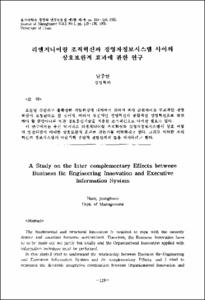만삭아에 있어서 중증 호흡기 합병증에 대한 분석
- Alternative Title
- Analysis of Term Infants With Significant Respiratory Complications
- Abstract
- A group of 33 term infants with significant respiratory complications were compared with 3,194 term infants delivered during the same time period and without respiratory morbidity. Compared with controls, the study group had a higher incidence of antepartum risk factors such as intrautirne growth retardation(12.1% versus 0.41%), postdatism(18.2% versus 2.79%) and intrapartum risk factors such as abnormal FHR(42.$% verse 3.2%), meconium-stained amniotic fluid(72.7% versus 6.9%). The odds ratio of intrauterine growth retardation for significant respiratory complications is 33.75 and that of postdatism is 7.753. The odds ratio of abnormal FHR for significant respiratory complications is 22.12 and ,that of meconium-stained amniotic fluid is 36.23. Even in the presence of normal intrapartum FHR and 5-minute Apgar scores, infants with meconium-staines amniotic fluid had an indicidence of respiratory complications 7∼8 times higher than those with clear amniotic fluid. Anterpartum risk factors, meconium-stained amniotic fluid, and abnormal FHR identified the fetus at high risk for significant respiratory complications.
A group of 33 term infants with significant respiratory complications were compared with 3,194 term infants delivered during the same time period and without respiratory morbidity. Compared with controls, the study group had a higher incidence of antepartum risk factors such as intrautirne growth retardation(12.1% versus 0.41%), postdatism(18.2% versus 2.79%) and intrapartum risk factors such as abnormal FHR(42.$% verse 3.2%), meconium-stained amniotic fluid(72.7% versus 6.9%). The odds ratio of intrauterine growth retardation for significant respiratory complications is 33.75 and that of postdatism is 7.753. The odds ratio of abnormal FHR for significant respiratory complications is 22.12 and ,that of meconium-stained amniotic fluid is 36.23. Even in the presence of normal intrapartum FHR and 5-minute Apgar scores, infants with meconium-staines amniotic fluid had an indicidence of respiratory complications 7∼8 times higher than those with clear amniotic fluid. Anterpartum risk factors, meconium-stained amniotic fluid, and abnormal FHR identified the fetus at high risk for significant respiratory complications.
- Issued Date
- 1992
- Type
- Research Laboratory
- Alternative Author(s)
- Lee, In-Sik; Kim, Ahm; Mok, Jung-Eun
- Publisher
- 울산의대학술지
- Language
- kor
- Rights
- 울산대학교 저작물은 저작권에 의해 보호받습니다.
- Citation Volume
- 1
- Citation Number
- 1
- Citation Start Page
- 146
- Citation End Page
- 151
- Appears in Collections:
- Research Laboratory > The ULSAN university medical journal
- 파일 목록
-
-
Download
 000002024112.pdf
기타 데이터 / 667.8 kB / Adobe PDF
000002024112.pdf
기타 데이터 / 667.8 kB / Adobe PDF
-
Items in Repository are protected by copyright, with all rights reserved, unless otherwise indicated.